
A University of California, Riverside, researcher investigates the fate, flux, size, chemistry, and number of cloud-critical bits of matter
Capturing flux data requires a sonic anemometer mounted on a tower to measure vertical wind speed at very high frequencies.
Ambient air is pulled downward into a series of instruments that record the number of particles, their size, chemical composition,
One sunny afternoon in the Spring of 2022, Markus Petters, a professor of atmospheric science at the University of California, Riverside, posed for a photo on a patch of grassy land in La Porte, Texas.
Petters studies particles in the planetary boundary layer, the humid band of air closest to the Earth’s surface. It’s a very active section of the atmosphere: trace gasses or particles can be injected into the boundary layer from above or from the ground.
Atmospheric aerosols are tiny particulate hybrids of solids and liquids, including water. They make clouds and precipitation possible.
These particles change in size, shape, and chemistry. Many of them help form clouds, temper solar radiation, and influence precipitation.
In the photo, an instrument trailer is parked in front of a 10-meter (32-foot) tower strung with guy wires. From the tower, a communications cable droops downward to the trailer.
The occasion was an investigation led by Petters: TRACER-PFM, which stands for Particle Flux Measurements during TRACER.
“Flux” is the collective movement of particles wafting up and down in a dynamic combination of density and velocity.
TRACER-PFM was an ancillary experiment accompanying a large 2021─2022 field campaign measuring convective storms. TRACER—the TRacking Aerosol Convection interactions ExpeRiment—was a one-year, all-season investigation of storm processes in the urbanized coastal region of Houston, Texas.
It was funded and managed by the Atmospheric Radiation Measurement (ARM) user facility in the Office of Science at the U.S. Department of Energy (DOE).
The TRACER mission was to observe aerosol-cloud interactions over a broad range of environmental conditions, including sea breezes, rural fields, and plumes of urban pollution.
Capturing Flux Data
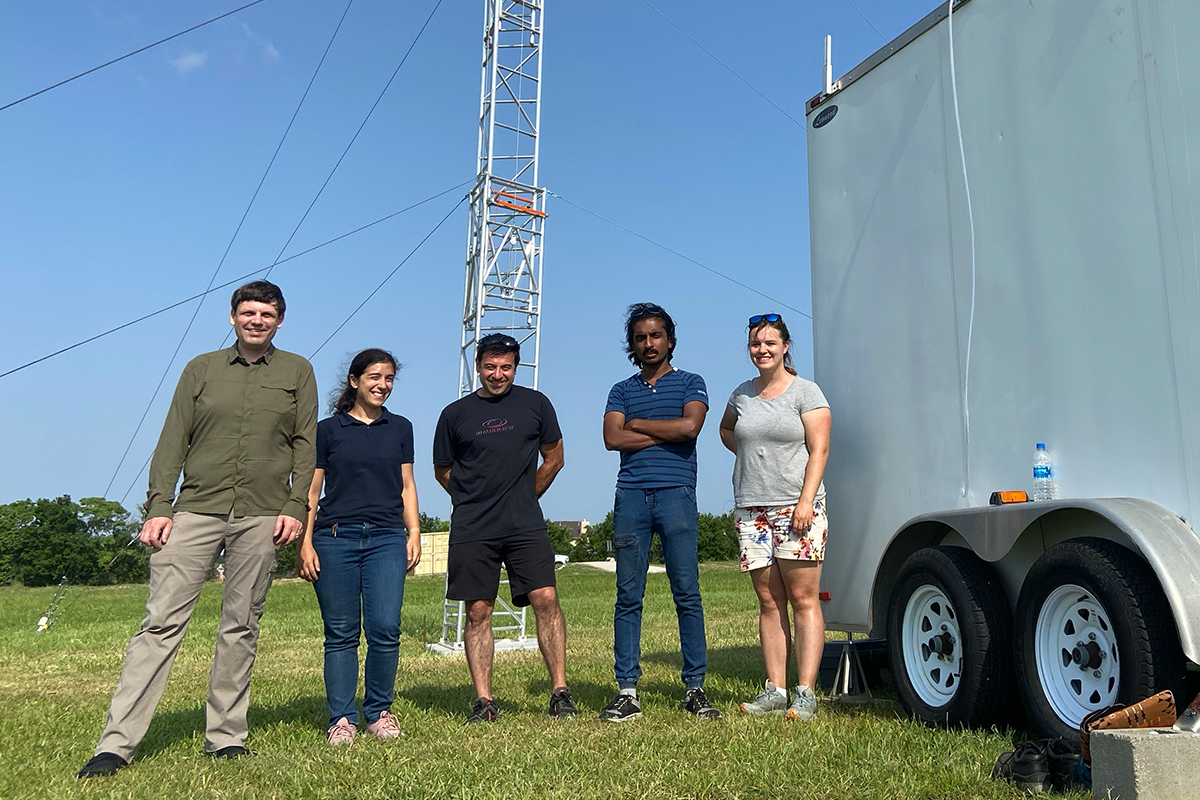
Between May and September 2022, the TRACER-PFM instrument array recorded data on site, which displayed relatively pristine rural and sea air, as well as urban influences from industry and vehicle exhaust.
Capturing flux data requires a sonic anemometer mounted on a tower to measure vertical wind speed at very high frequencies.
Ambient air is pulled downward into a series of instruments that record the number of particles, their size, chemical composition, and hygroscopicity.
Hygroscopicity measurements, collected by a humidified tandem differential mobility analyzer (HTDMA), indicate a particle’s degree of aerosol water uptake, which is important to how aerosols scatter solar radiation.
A single-particle soot photometer (SP2) at the base of the TRACER-PFM tower measured refractory black carbon in individual particles, an atmosphere-warming property linked to solar absorption.
“We are currently learning how local meteorology influences the distributions of hygroscopicity and black carbon in this complex environment,” says Petters. “Perhaps not surprisingly, onshore flow from the Gulf coast significantly changes the properties of the aerosol seen at the site.”
TRACER-PFM benefited from synergistic data acquired by ARM’s Doppler radars, which measure horizontal wind-field velocities and high-frequency wind fluxes.
Off-site, the technical analysis that follows is challenging, says Petters. “Retrieving data in a heterogeneous environment (one with a complex variety of aerosols) is incredibly difficult.”
Episodes of Dust
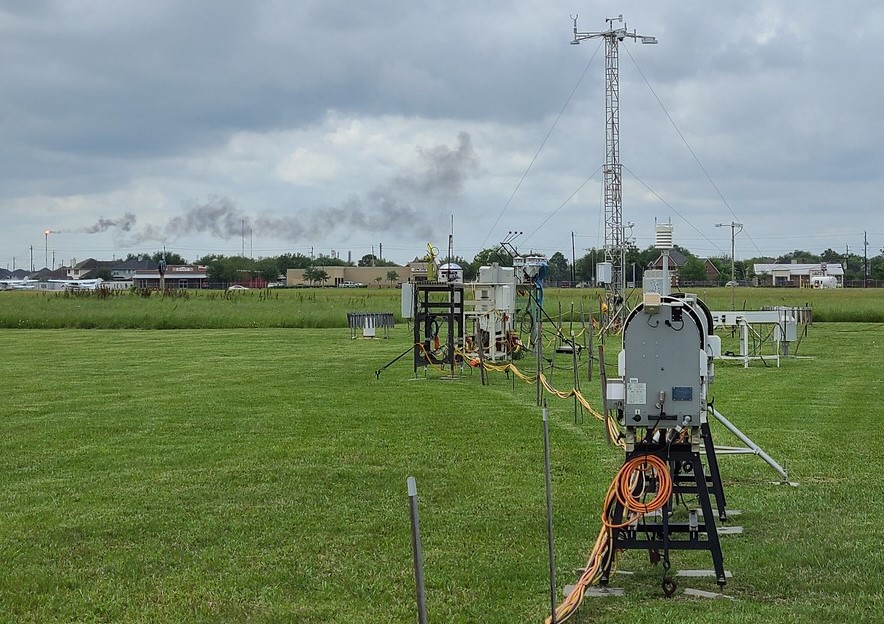
The same data revealed episodes of coarse dust distributed by the wind, says Petters, as reflected in a recently published paper in the journal Atmospheric Chemistry and Physics. “Urban landscapes like Houston are very dry places, with a lot of bare soil” and particles that start as emissions from road-tire wear.
As a result, he adds, “For the first time, we have firm numbers on how many (coarse) particles are coming from the surface. Larger particles are cloud-active and can nucleate ice or act like giant cloud condensation nuclei,” or CCN.
CCN are linked to the formation of cloud droplets and are thought to influence the lifecycle of convective storms.
Presently, a conclusive dataset is not yet in place. Still, the ARM Data Center has archived TRACER-PFM measurements from the tower’s sonic anemometer, the soot-catching SP2, the HTDMA, and a radial differential mobility analyzer (RDMA) that extended particle size distribution measurements down to 5 nanometers.
“How can we do the data processing in a better way?” asks Petters. For one, he is looking into identifying case studies of TRACER days when particle flux measurements were optimal.
A Path to Atmospheric Science

Petters grew up in a small town in southern Germany. It was near both Frankfurt and Stuttgart but far enough away to seem like “the middle of nowhere,” he says.
A love for math and science drew him happily through school, with an initial favorite (biology) giving way to chemistry. It was an era in which acid rain dominated environmental concerns.
That acid-rain chemistry imperative (and a love for the ocean) led Petters to the University of Oldenburg (Intermediate Diploma, Marine Environmental Science, 1997).
His marine studies at a university just 50 miles from the North Sea required a holistic mix of classes on ocean-oriented biology, chemistry, and physics.
Then came a fourth-year undergraduate exchange program in the American West that turned Petters from ocean to soil, and then to the atmosphere.
“My Germany period,” he says of his path to higher degrees, “was very brief.”
Petters arrived at the University of Wyoming (M.S. Soil Science, 2000, PhD, Atmospheric Science, 2004) during what he calls his “discovery phase. I just wanted to learn new stuff and see new places.”
In his soil-science phase, Petters worked with Renduo Zhang, now at Sun Yat-Sen University in China, on a master’s thesis on groundwater remediation.
But a capstone project during his master’s studies required an environmental assessment of the oil and gas industry in Wyoming, then booming in the late 1990s. By chance, that inquiry led back to a class with atmospheric scientist Jeffrey Robert “Jeff” Snider.
“Which I had really liked,” says Petters, taught by the man (now an emeritus professor) who became his dissertation advisor. “He then was looking for a PhD student. That’s how I ended up in atmospheric science.”
A Path to Aerosols
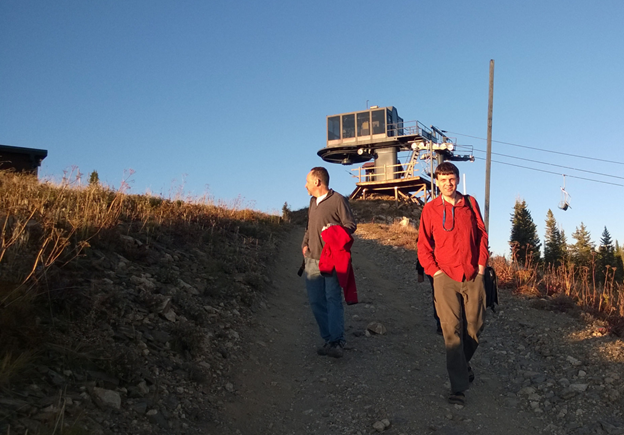
Before beginning his PhD studies, says Petters, “I didn’t know much about aerosols.”
That changed fast in 2001, when Petters got involved in an aerial field campaign off the coast of southern California funded by the National Science Foundation (NSF). Its mission included evaluations of how aerosols affected marine clouds and precipitation.
The NSF campaign, the Second Dynamics and Chemistry of Marine Stratocumulus (DYCOMS-II) field study, was sponsored by the National Science Foundation and involved the Colorado-based National Center for Atmospheric Research (NCAR) C-130 research aircraft.
DYCOMS-II data went on to undergird Petters’ PhD dissertation on how particulate matter influences cloud formation. It was an inquiry related to much of his subsequent research work.
More specifically, his dissertation investigated what are apparently cloud-free, heavily drizzling areas within an otherwise solid deck of marine clouds.
“They were pretty hard to explain at the time,” says Petters. “The main theme is that these open cellular areas are really starved of aerosols.”
Along the way, in 2003, Snider sent him on a measurement-training trip to Storm Peak Laboratory, a high-altitude research facility in the Rocky Mountains of Colorado. There, Petters met Paul DeMott, Sonia Kreidenweis, and others from Colorado State University—where he became a postdoc and later a research scientist (2005-2009).
At Colorado State, Petters began to focus on aerosol measurements.
‘Super-Productive’

“The immediate need was to do ice nucleation measurements in the Amazon,” said Petters of his early Colorado days. “That seemed appealing to me. I used to like to travel.”
Add that to many other projects over the next four years, a very active research group, and “a wonderful environment created by one of my main mentors,” he says of Kreidenweis, and the Colorado interlude “was a super-productive part of my life.”
In part, that high research productivity was because of a new, powerful cloud condensation nuclei (CCN) counter developed by Droplet Measurement Technologies. “It made a lot of CCN studies easier than they used to be. It was a golden age of CCN studies.”
The running joke back then, says Petters, was that “you could just turn the instrument on and print out a (peer-reviewed) paper.”
Variations of the Cloud Condensation Nuclei Particle Counter, he says, are today core aerosol instruments for ARM.
A Lab Creature, and More
Following Colorado, during a long-time professorship at North Carolina State University (2009-2023), “I became more of a lab creature,” says Petters.
However, there was time for a few field campaigns. These included the Integrated Precipitation and Hydrology Experiment (IPHeX 2014), the Southern Oxidant and Aerosol Study (SOAS 2014), the Fifth International Workshop on Ice Nucleation, phase 2 (FIN-02 2015), FIN-03 2015, Calwater 2015, and—more recently—TRACER and EPCAPE.
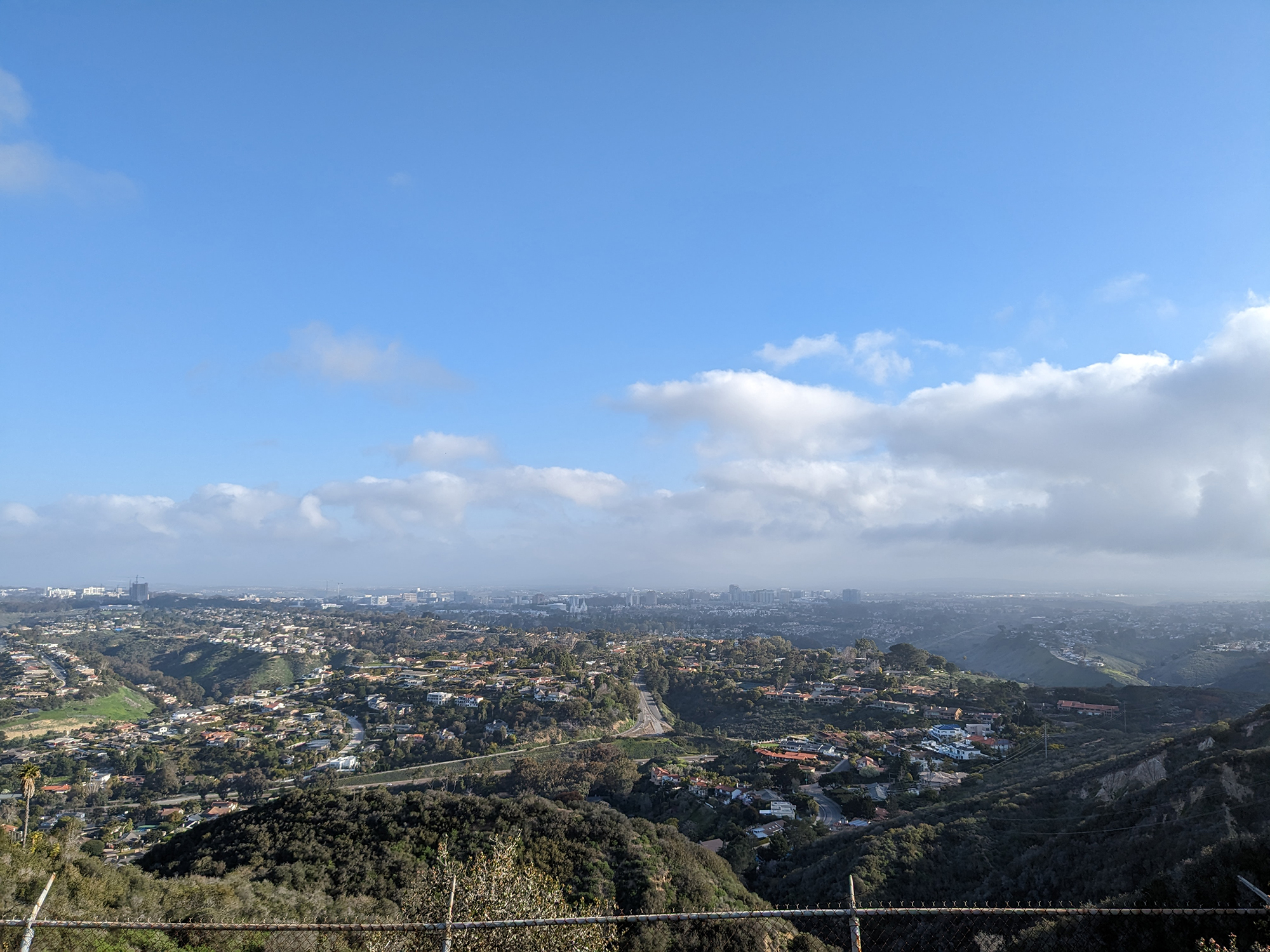
EPCAPE, the Eastern Pacific Cloud Aerosol Precipitation Experiment, was an ambitious ARM-DOE effort in 2023 and 2024 to study marine stratocumulus. Part of it was a smaller field campaign that Petters led: the Coastal Cloud Chemistry during EPCAPE (EPCAPE-CCC-CCN).
A tenure-track position “allows you to explore your own science,” reflects Petters. “In that sense, North Carolina delivered.”
Tasks at Hand
After a guest professorship at Aarhus University in Denmark (2022), Petters moved on to his job at Riverside—a switch from a department focused on meteorology to one where “certain opportunities on the engineering side” presented themselves, he says. “A lot of what we do is hands-on engineering, (so it’s good) being in an environment where people know how to hold a wrench.”
At the same time, science is the focus of another NSF project now in progress, with Petters as a partner: the Cold Air Outbreak Experiment in the Sub-Arctic Region (CAESAR). Now underway through March 2024 in Kiruna, Sweden, the aerial campaign is studying boundary layer structure as air masses from the ice edge of the Arctic move across open-ocean waters to the south. Scientists call the resulting phenomena “cold air outbreaks.”
Later in February 2024, Petters will fly to Kiruna to begin taking measurements of black carbon, CCN, and particle-size distributions aboard an NSF-NCAR C-130 aircraft. Data will complement ground measurements from ARM’s 2019-2020 Cold-Air Outbreaks in Marine Boundary Layer Experiment (COMBLE) over the Norwegian Sea.
A Search for Order
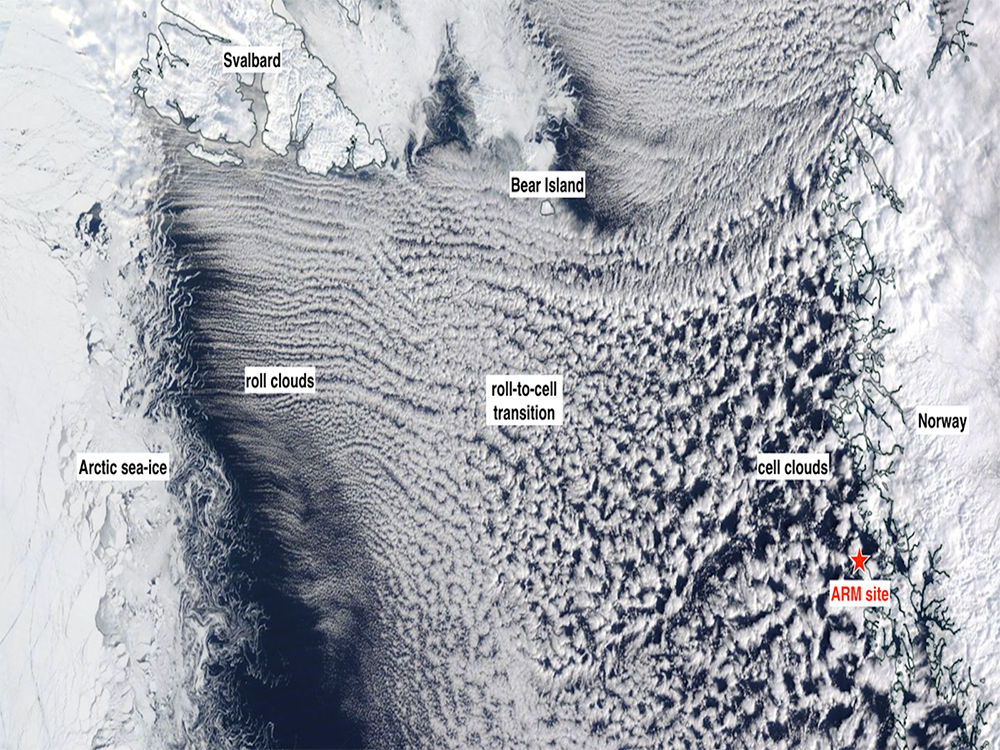
The Aerial research for CAESAR, briefly at least, will not leave Petters much time for flying around at home, chasing what else he says keeps him busy: “kids, kids, kids, and kids.”
He and Sarah Petters, also a researcher at Riverside, have two children, ages 3 and 6. In the boundary layer of the Petters household, they move around as fast as turbulent flux.
Nevertheless, Petters leaves some quiet time in the day for chess, which he learned to play as a child. It’s a game whose rules can be learned in an afternoon, he says, yet it is a complex pursuit that balances “art, intuition, geometric patterns, and raw mathematical calculation.”
Making a gambit to find a winning solution is enjoyable but often presents a chess player with problems (like those in science) that are chaotic and defy predictability.
Petters is an expert on flux who studies the rules defining atmospheric order.
With that in mind, he says: “As is the case for numerical weather prediction at long time scales, reasoning about such complex systems is still possible.”
# # #Author: Corydon Ireland, Staff Writer, Pacific Northwest National Laboratory
This work was supported by the U.S. Department of Energy’s Office of Science, through the Biological and Environmental Research program as part of the Atmospheric System Research program.

